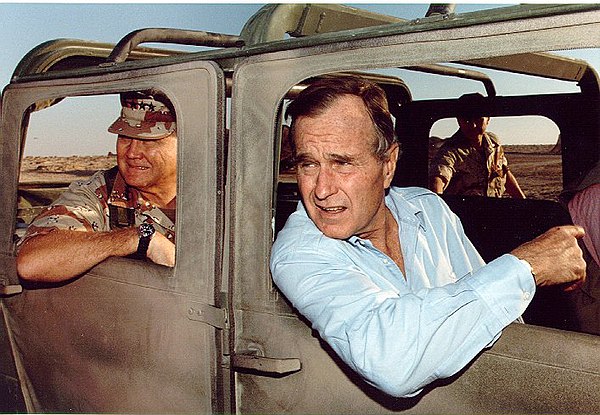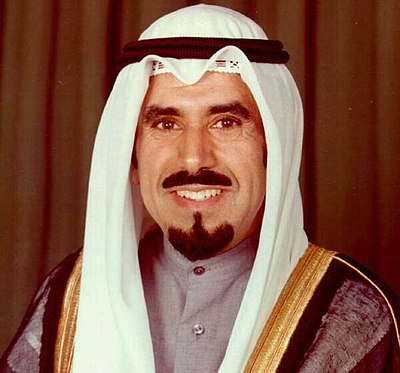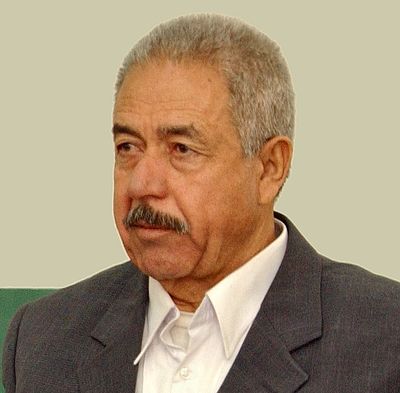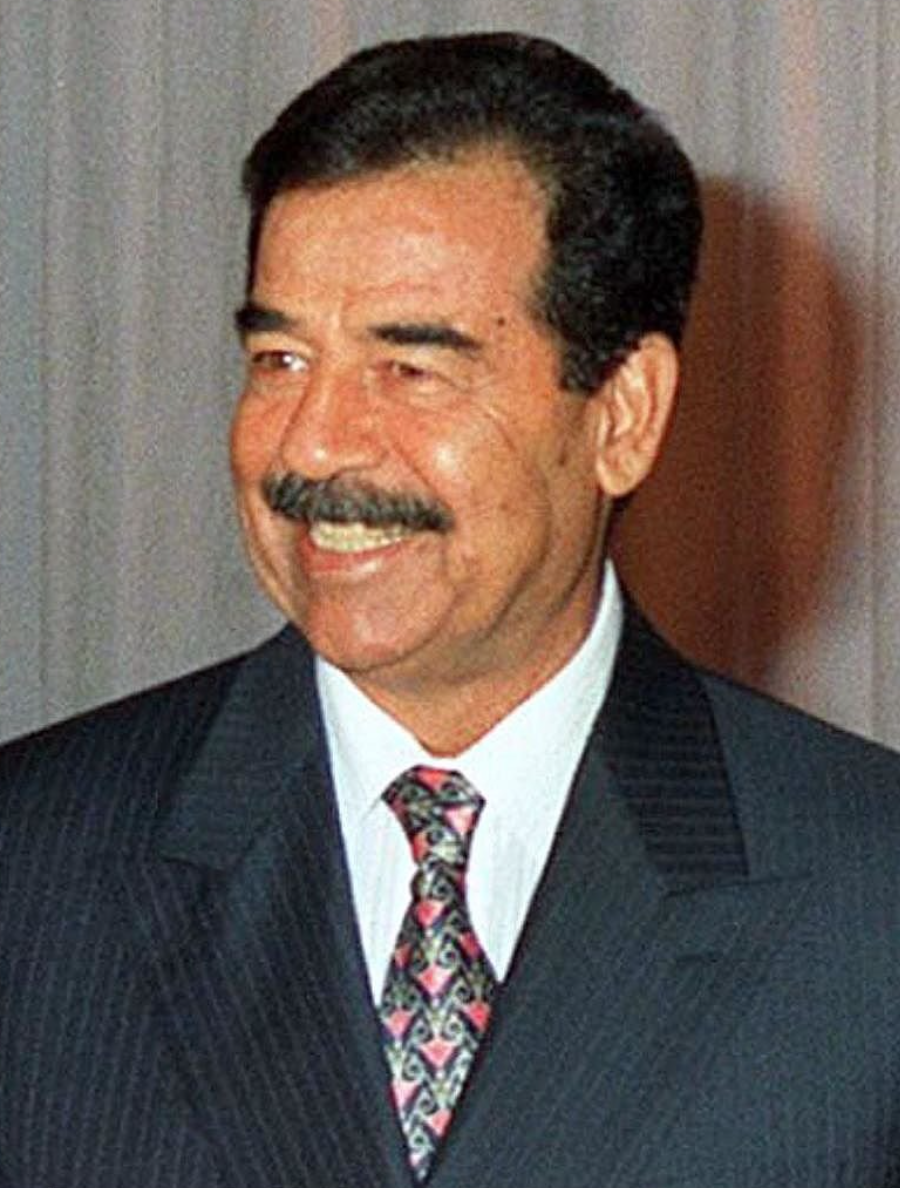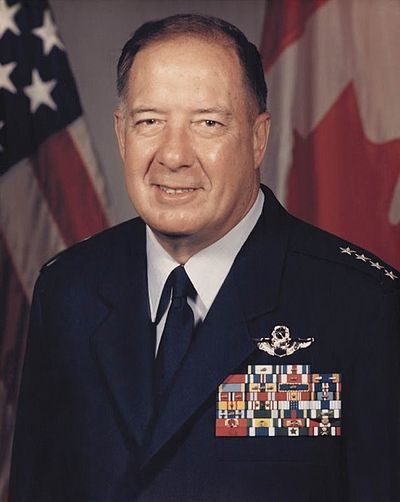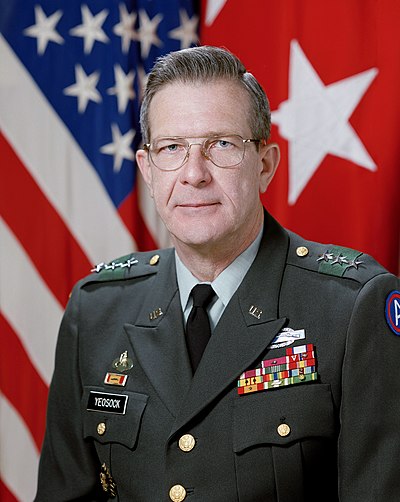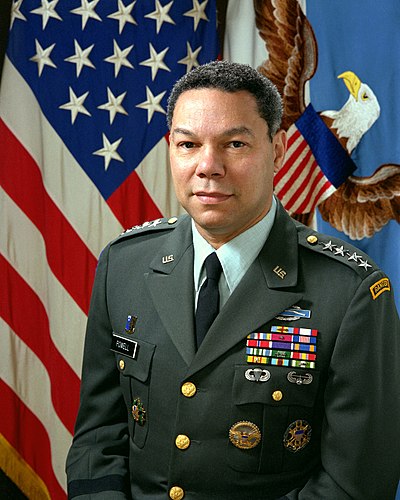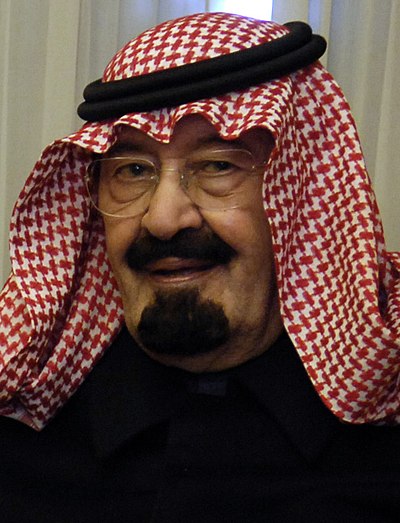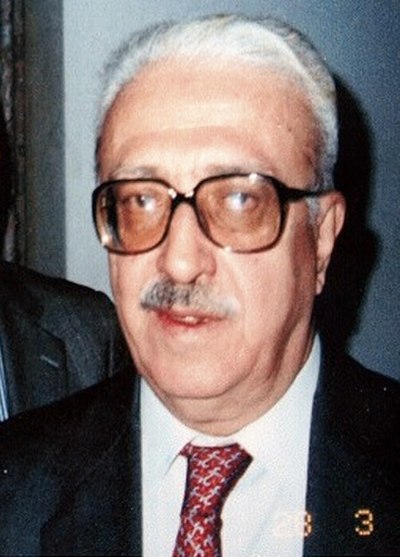To ensure that the United States received economic backing, James Baker went on an 11-day journey to nine countries in September 1990, which the press dubbed "The Tin Cup Trip". The first stop was Saudi Arabia, which a month before had already granted permission to the United States to use its facilities. However, Baker believed that Saudi Arabia should assume some of the cost of the military efforts to defend it. When Baker asked King Fahd for 15 billion dollars, the King readily agreed, with the promise that Baker ask Kuwait for the same amount.
The next day, 7 September, he did just that, and the Emir of Kuwait, displaced in a Sheraton hotel outside his invaded country, easily agreed. Baker then moved to enter talks with Egypt, whose leadership he considered "the moderate voice of the Middle East". President Mubarak of Egypt was furious with Saddam for his invasion of Kuwait, and for the fact that Saddam had assured Mubarak that an invasion was not his intention. Egypt received approximately $7 billion in debt forgiveness for its providing of support and troops for the US-led intervention.
Baker traveled to Syria to discuss its role in the crisis with its President Hafez Assad. Harboring this animosity and impressed with Baker's diplomatic initiative to visit Damascus (relations had been severed since the 1983 bombing of US Marine barracks in Beirut), Assad agreed to pledge up to 100,000 Syrian troops to the coalition effort. This was a vital step in ensuring Arab states were represented in the coalition. In exchange, Washington gave Syrian dictator President Hafez al-Assad the green light to wipe out forces opposing Syria's rule in Lebanon and arranged for weapons valued at a billion dollars to be provided to Syria, mostly through Gulf states. In exchange for Iran's support for the US-led intervention, the US government promised the Iranian government to end US opposition to World Bank loans to Iran. On the day before the ground invasion began, the World Bank gave Iran the first loan of $250m.
Baker flew to Rome for a brief visit with the Italians in which he was promised the use of some military equipment, before journeying to Germany to meet with American ally Chancellor Kohl. Although Germany's constitution (which was brokered essentially by the United States) prohibited military involvement outside Germany's borders, Kohl committed a two billion dollar contribution to the coalition's war effort, as well as further economic and military support of coalition ally Turkey, and the transportation of Egyptian soldiers and ships to the Persian Gulf.
A coalition of forces opposing Iraq's aggression was formed, consisting of forces from 39 countries. It was the largest coalition since World War II. US Army General Norman Schwarzkopf, Jr. was designated to be the commander of the coalition forces in the Persian Gulf area. The Soviet Union condemned Baghdad's aggression against Kuwait, but did not support the United States and allied intervention in Iraq and tried to avert it.
Although they did not contribute any forces, Japan and Germany made financial contributions totaling $10 billion and $6.6 billion respectively. US troops represented 73% of the coalition's 956,600 troops in Iraq. Many of the coalition countries were reluctant to commit military forces. Some felt that the war was an internal Arab affair or did not want to increase US influence in the Middle East. In the end, however, many governments were persuaded by Iraq's belligerence towards other Arab states, offers of economic aid or debt forgiveness, and threats to withhold aid.











